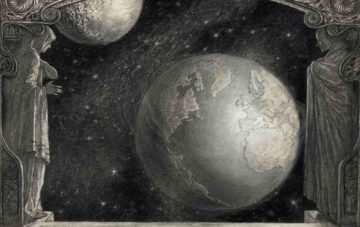 Berlin Alexanderplatz came to define Döblin’s legacy, both in his lifetime and over the ensuing decades. Unlike its predecessors, it focuses on a single character (Franz Biberkopf) and covers a short timespan and limited geography (Berlin in the 1920s). Chaotic in plot and form, Alexanderplatz found an enthusiastic reception in Germany and a quick translation into English (by Eugene Jolas in 1931), helping to secure its status as a modernist totem. Yet one finds the seeds of its immersive and clamorous style buried in Mountains Oceans Giants, a book better known for its lukewarm if bemused reception. Both of the works could aptly be defined as an “epic,” not just in a general sense but also as Döblin himself interpreted the term in 1929 (in an essay Godwin has translated). Distinguishing the epicist from the novelist, Döblin argues that the former employs “the report mode”; the epicist “must approach very close to reality, its solidity, its blood, its smells, and then must pierce through it.” But reportage doesn’t preclude creation, even fabulation. In the epic, Döblin understands “reality, phantasy and wish-fulfillment” as co-constitutive. Mountains Oceans Giants itself relies on contemporaneous facts—whether culled from news reports on industrial monopolies or from scientific libraries—to imagine the facts of the future. Like the human mind, an adequate picture of reality holds both types of fact in suspension.
Berlin Alexanderplatz came to define Döblin’s legacy, both in his lifetime and over the ensuing decades. Unlike its predecessors, it focuses on a single character (Franz Biberkopf) and covers a short timespan and limited geography (Berlin in the 1920s). Chaotic in plot and form, Alexanderplatz found an enthusiastic reception in Germany and a quick translation into English (by Eugene Jolas in 1931), helping to secure its status as a modernist totem. Yet one finds the seeds of its immersive and clamorous style buried in Mountains Oceans Giants, a book better known for its lukewarm if bemused reception. Both of the works could aptly be defined as an “epic,” not just in a general sense but also as Döblin himself interpreted the term in 1929 (in an essay Godwin has translated). Distinguishing the epicist from the novelist, Döblin argues that the former employs “the report mode”; the epicist “must approach very close to reality, its solidity, its blood, its smells, and then must pierce through it.” But reportage doesn’t preclude creation, even fabulation. In the epic, Döblin understands “reality, phantasy and wish-fulfillment” as co-constitutive. Mountains Oceans Giants itself relies on contemporaneous facts—whether culled from news reports on industrial monopolies or from scientific libraries—to imagine the facts of the future. Like the human mind, an adequate picture of reality holds both types of fact in suspension.
more here.
